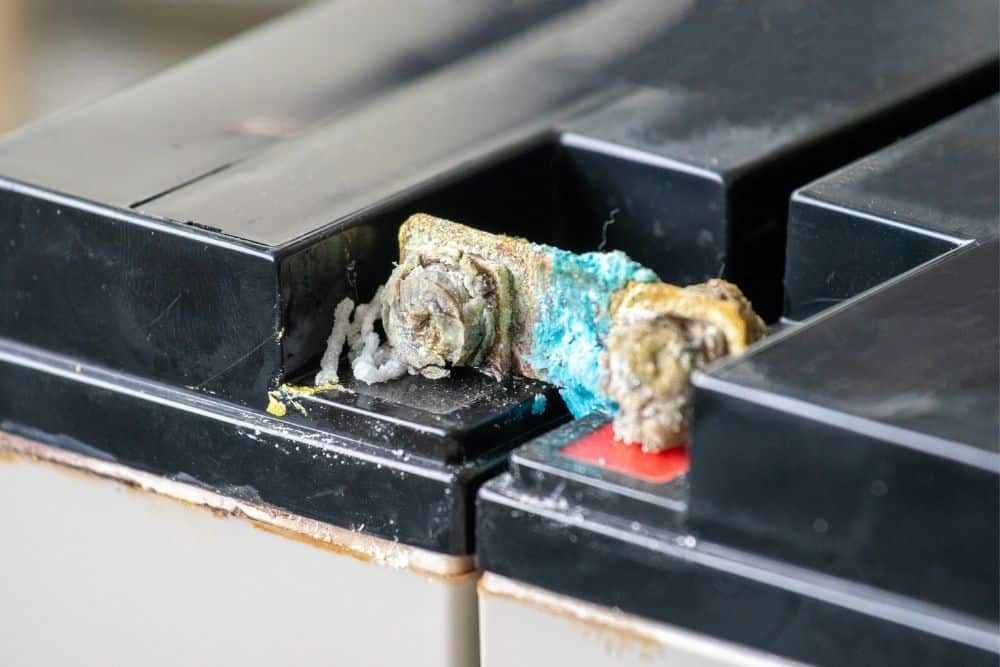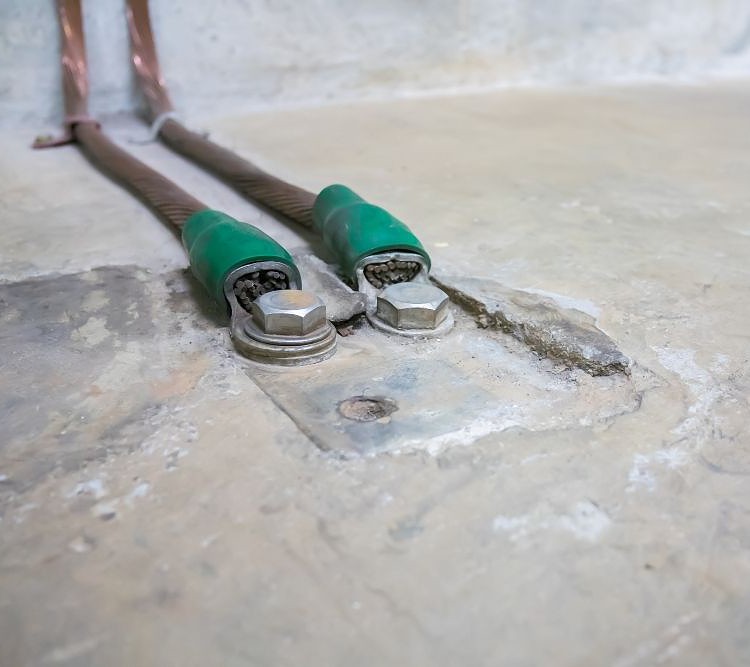Is your trolling motor losing power? It may:
- Start out working well, then lose power slowly over your day of fishing.
- Stop working entirely.
- Seem like it has less power than it used to.
All of these are problems that you can solve so you can get back out on the water with a fully-powered trolling motor.
Here’s what you need to know to find out why your trolling motor is losing power and fix the problem.
Table of Contents
What Causes a Trolling Motor to Lose Power?

There are several reasons why a trolling motor might lose power. These include the following potential problems.
Your Battery is Dying
Use a multimeter to test your boat battery or batteries (if you carry more than one). You can get one of these at your local automotive or boating store.
Hook it up like you would hook up jumper cables, with negative clamps on the negative battery terminals and positive ones on the positive terminals.
If you are using a 12 volt battery, your voltage should read 12.4 volts or higher. If you’re using a 24 volt battery, you want your reading to be at least 28.8 volts. If it does not, the battery needs to be changed.
The video below shows you how to test a car battery. You will test your boat battery the same way.
You Have Bad Wires
To check the wiring, you’ll need to be able to see as much of it as possible. This may mean removing panels or other parts of your boat.
Follow the wires along as much of their length as possible. Check for nicks or cuts in the outer casing around the wires. Look, too, for frayed ends, places where wires are spliced or split, or places where a naked wire is lying against any other part of your boat.
If you find wiring problems, you’ll need to replace those wires. You can do this yourself or have a marine electrical specialist do it for you.
You Have Loose Connections Between Wires
While you’re checking your wires, check the connections between them, too. If they are not connected properly, your trolling motor may lose power.
Look for faulty crimp connections or friction connectors that have come unplugged. You may simply need to reattach the wires, or you may need to replace the section of wire that has come loose.
Read more: How to Wire Trolling Motors for Inflatable Boats
There is Corrosion in the Electrical System or On Battery Terminals

Corrosion is easy to see on battery terminals or electrical connections. Look for a white or tan buildup on your battery terminals or anywhere where two or more wires come together.
If you find corrosion, you’ll want to remove it. Otherwise, it can block your electrical current from getting where you need it – to your trolling motor.
Remove all electrical connections to the battery and clean them, as well. Pour baking soda over the corroded area, then pour water on top of that and let it bubble. You may need to scrub the corroded area gently with a toothbrush for full removal.
Use a paper towel to wipe the terminal and connecting pieces clean. Finally, reattach the battery and test your trolling motor again.
You Have Bad Ground Wires
To find a bad ground, you may want to bring in a professional right away. Unless you have a background working with electrical systems, finding a bad ground can take a lot of time and energy. You also run the risk of electrical shocks.
Find a qualified marine electrician to test your boat, find your faulty ground wires, and replace them so that it will work well again soon.

Your Propeller Shaft is Bound Up
If your electrical system is working well, it’s time to look at your propeller. Pop the propeller off the shaft and remove any other housing so you can see the entire shaft.
Check to see if there is anything wrapped around the shaft. It’s easy to get long fishing lines or even lengths of certain marine plants twisted up on your propeller shaft.
When this happens, the shaft will not turn. It won’t matter how much power the shaft is getting or the condition of your battery. Remove whatever is wrapped around the shaft, replace the propeller, and try the boat again.
Your Trolling Motor is Old and Wearing Out
Over time, your trolling motor will experience wear and tear. It might not use power as efficiently, so it may draw more power and drain the battery faster. It might also stop working as well, if it can’t get the power it needs from the battery.
If your trolling motor is out of warranty and seems to be losing power, it may be time to replace it. If you run through the troubleshooting tips above and it’s still not working, try another trolling motor. You may want to borrow one from a friend to run this test.
If the second trolling motor works well, then yours may need to be repaired or replaced. If you like to fix things, you can also run through a process as outlined in the video below. You may find different problems with your motor, though.
Get the parts you need, replace them, and try your trolling motor again. If it’s still not working, it’s probably time to get a new one.
How to Test Your Trolling Motor for Power Issues
Start by testing your battery. Buy a voltage meter. First, check the voltage at the battery terminals. If it is not where it should be based on the stated voltage of the battery, then you need to replace your batteries.

If the voltage at the battery is fine, remove the cover from the trolling motor, put the boat in the water, and turn the motor on.
Check the voltage at the black and red power wires under the cover. These are the power input wires for your trolling motor. If there is significantly less voltage here than there was at the battery, you have wiring problems on your boat.
If you are comfortable working with electronics, you can test your boat’s wiring and make repairs. Otherwise, find a qualified marine electrician who can do the job for you.
If the voltage is good at both the battery and the trolling motor, take your batteries to an auto or machine shop for a load test. This checks to see if the battery can maintain a high enough voltage over time and in different types of situations.
If the voltage test or the load test shows that you need new batteries, make sure you purchase ones that are designed for boats and trolling motors.
If your batteries are working well, check your trolling motor. Take off the propeller and see if there is anything wrapped around the propeller shaft. If there is, remove it and test the trolling motor again.

Finally, get your trolling motor checked out by an expert. They can tell you if the motor is working well, if it needs repairs or if it is old and should be replaced. Follow their recommendations to continue getting the most out of your trolling motor.
Conclusion
Trolling motors can make fishing so much more enjoyable, but they need to be working well to achieve that goal. If your trolling motor is losing power, perform the tests described here.
Before you know it, your trolling motor will be working well again. Then you can get back out on the water and start enjoying yourself there again.

I created this site to help people – to help you – with your boat problems. Instead of helping one person at a time, I want this website to be the “one-stop-shop” for everyone’s boating concerns. Read more.

